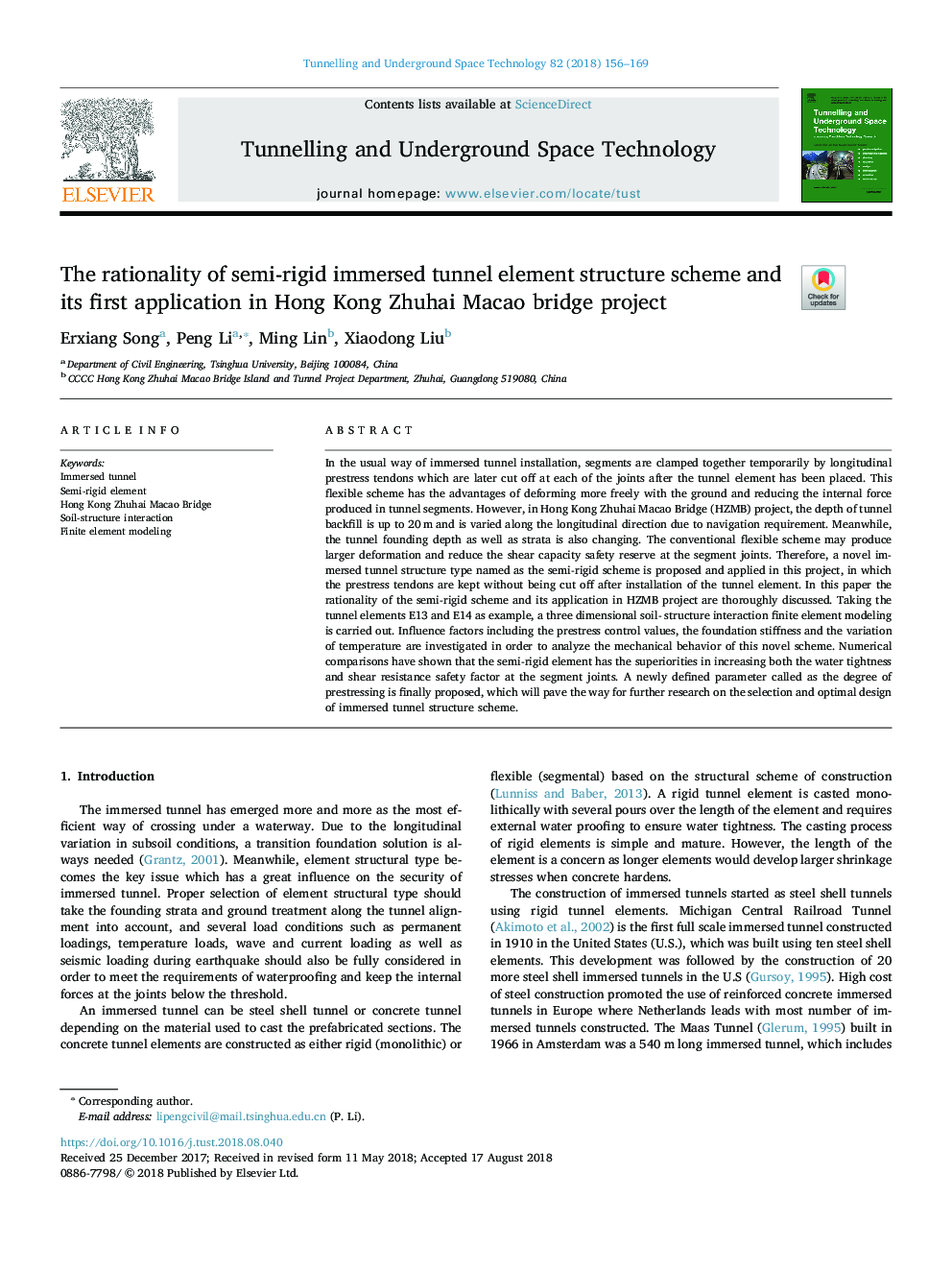| Article ID | Journal | Published Year | Pages | File Type |
|---|---|---|---|---|
| 11001348 | Tunnelling and Underground Space Technology | 2018 | 14 Pages |
Abstract
In the usual way of immersed tunnel installation, segments are clamped together temporarily by longitudinal prestress tendons which are later cut off at each of the joints after the tunnel element has been placed. This flexible scheme has the advantages of deforming more freely with the ground and reducing the internal force produced in tunnel segments. However, in Hong Kong Zhuhai Macao Bridge (HZMB) project, the depth of tunnel backfill is up to 20â¯m and is varied along the longitudinal direction due to navigation requirement. Meanwhile, the tunnel founding depth as well as strata is also changing. The conventional flexible scheme may produce larger deformation and reduce the shear capacity safety reserve at the segment joints. Therefore, a novel immersed tunnel structure type named as the semi-rigid scheme is proposed and applied in this project, in which the prestress tendons are kept without being cut off after installation of the tunnel element. In this paper the rationality of the semi-rigid scheme and its application in HZMB project are thoroughly discussed. Taking the tunnel elements E13 and E14 as example, a three dimensional soil- structure interaction finite element modeling is carried out. Influence factors including the prestress control values, the foundation stiffness and the variation of temperature are investigated in order to analyze the mechanical behavior of this novel scheme. Numerical comparisons have shown that the semi-rigid element has the superiorities in increasing both the water tightness and shear resistance safety factor at the segment joints. A newly defined parameter called as the degree of prestressing is finally proposed, which will pave the way for further research on the selection and optimal design of immersed tunnel structure scheme.
Related Topics
Physical Sciences and Engineering
Earth and Planetary Sciences
Geotechnical Engineering and Engineering Geology
Authors
Erxiang Song, Peng Li, Ming Lin, Xiaodong Liu,
